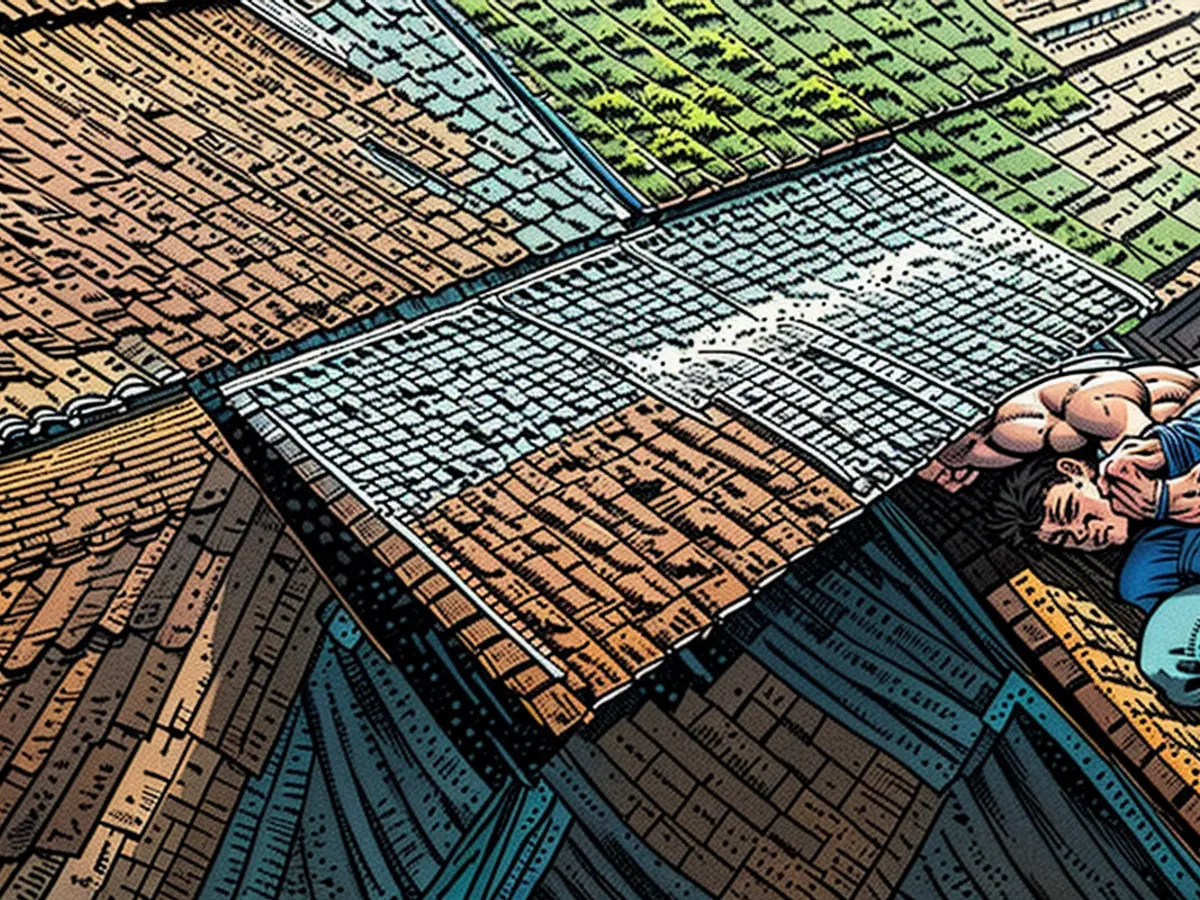Perform an Annual Self-Assessment of Your Home to Identify Unseen Issues
Home maintenance is a lengthy endeavor, not a quick sprint - there's always something to repair, clean, or replace. If you aim to keep your living space in good condition throughout your residence, you'll quickly become adept at routine maintenance. However, no matter how careful you are, some issues will always manage to evade detection for various reasons. If a part of your house is functioning effectively without causing any problems, it's natural to neglect it.
This reactive strategy towards home maintenance - putting in effort only when disaster strikes - often results in grabbing buckets to catch leaks in your bedroom at 2am during a stormy night. An annual assessment of your residence - especially focusing on areas you seldom notice - can help you stay on top of your property's overall condition and prevent potential issues that may be simmering beneath the surface. Fall is the perfect time for this examination as the summer's heat and humidity have subsided, while winter's cold and snow are still a ways off, and there are plenty of daylight hours left to work with. Here's a brief outline of what to examine during an annual DIY home evaluation.
Overlooked spaces
Somewhat shocking, in fact, to think about the amount of our homes we rarely use. There are spare bedrooms we seldom enter, dark, untouched spaces we steer clear of, and spaces that are difficult to reach. Yet, it's in these unseen areas where problems materialize behind closed doors, only to announce themselves at the most inconvenient times - so, in the fall, take a look at some of the spaces you typically ignore:
Attic
If you rarely visit the attic, search for:
- Roof underside stains, hinting at a slow leak
- Mold signs
- Make sure all vents are clear
- Check for animal or insect infestations
- Check insulation for mold, water damage, pest harm, and depth - it should be at least a foot deep between the joists.
Basements and crawl spaces
Even if you utilize the basement for storage and it's finished, venture inside:
- Inspect the sump pump, by pouring water into the pit, to ensure it's in good working order
- Look for water stains on the floor or walls, suggesting water infiltration and damage
- Inspect the walls, for cracks, crumbling masonry, or bulges
- Examine the humidity, ideally between 30 and 50%
- Search for signs of rodents or insects.
Roof
You're not a professional roofer, but you can identify obvious red flags:
- Loose shingles
- Flat rubber roof cracks
- Loose or worn flashing around vents and chimneys
- Puddling
- Inspect gutters to ensure they're not obstructed with debris or pulling away from the roof
You can examine all this from the ground, but an inspection camera or drone can provide a better perspective.
Underutilized spaces
Although the rarely-used spare bedroom may appear problem-free, check for:
- Dampness or high humidity, indicating water intrusion
- Stains suggesting a water or roof leak
- Any unusual occurrences (odor, temperature, sound) that might go unnoticed unless you're in the room.
Examine functioning parts
Now, test all your home's moving components: Ensure all the doors and windows in all rooms open and close smoothly, without excessive effort. Windows should lock effortlessly, and doors shouldn't need unnecessary force to close. If you come across windows or doors that don't operate well, lubrication might be enough. However, they might be swollen from water intrusion, or the house might have settled, but it could hint at replacement time.
Weather stripping can wear out or shrink with time and exposure to heat and sun. Check all door and window edges for gaps or damage, and replace the old stripping with new weather stripping. Remove any damaged or peeling caulk and re-caulk using an exterior caulk designed for doors and windows.
Seal cracks
Outside your home, check your exterior walls and hardscape surfaces for cracks. While sidewalk cracks might not pose an immediate threat, any crack outside your house will allow water to collect, and when it freezes, it will expand the crack and further weaken the material, so it's wise to fill those cracks. Using a patching compound, you can easily fill and seal cracks in driveways, sidewalks, and other flat surfaces. Cracked siding can be temporarily repaired using spare siding pieces and caulk, and you can also caulk small cracks in stucco exteriors or use a pre-mixed stucco patch. A few moments with a caulk gun can prevent water intrusion and potentially save you trouble later.
If you come across a larger issue with a walkway, like shifting concrete or larger gaps or holes, professional assistance may be necessary. September is also a good time to rake gravel pathways and check stepping stone and paver paths to ensure they're not shifting.
Step treads can become noisy and worn out, particularly on outdoor stairs, so take a moment to assess your staircase for any signs of damage or shifting treads. If you come across any treads that appear loose or produce an audible creak, consider employing a wood screw to secure it to the runner beneath. For heavily worn treads, it may be advisable to engage the services of a professional to ensure the steps remain safe. Applying some non-slip tape can also aid in preventing accidents during wet or icy conditions.
Electrical inspection
Conducting a standard home inspection of your electrical setup doesn't necessitate being a professional electrician:
- Inspect the electrical panel for any evidence of scorch marks or discoloration surrounding the breakers, and contact an electrician if necessary.
- Verify that every outlet in your home is operational. You can utilize a voltage tester to accomplish this, or simply carry a small lamp to test the outlets.
- Ensure that all light switches within your property function correctly. Be mindful of flickering lights and contact an electrician if you encounter any issues.
- Examine the external environment to ensure that no tree branches encroach upon the electrical wires. If so, consider having trees trimmed to avoid the potential of the branches damaging the wires during inclement weather.
Plumbing inspection
A majority of plumbing issues can be diagnosed through a basic visual inspection:
- Guarantee that all faucets, spigots, and toilets function properly, paying particular attention to lesser-utilized areas such as basement bathrooms.
- Assess the water pressure in every fixture to ensure it remains robust.
- Test drains to ensure they empty efficiently without overflowing.
- Inspect the base of toilets and beneath cabinets for any signs of water leakage.
- Examine your water heater for any traces of rust or leaks. If any are found, it may be time to invest in a new unit. Consider draining the water heater to assess for sediment.
- Evaluate the caulking around tubs, showers, sinks, and toilets, replaced any that has deteriorated.
- In your backyard, patio, or deck, examine exterior water spigots for any leaks. If possible, disconnect and drain hoses and shut off the exterior water supply for the winter.
Filter cleaning
Your home relies on various air filters to maintain clean indoor air, and this is an excellent time to check and clean all of them, including air conditioners, vents, furnaces, and even vacuum cleaners.
Seek out rot and insect damage
Finally, inspect the exterior of your house for signs of dry rot and insect damage, focusing on window and door trim, wood decks, and the fascia under the roof. Warped areas, soft spots, or bubbling paint are all potential indicators of rot. Rot can be treated if it's not too widespread or severe, but a professional may be required for extensive repairs.
Be on the lookout for invasive insects such as termites, carpenter bees, and carpenter ants, which often create homes within window trim or other covered wood areas. Detecting these infestations early can prevent extensive damage to your home.
What not to DIY
Fire extinguishers
If your fire extinguisher hasn't been serviced or recharged in over a year, it's recommended to have it inspected by a certified fire safety specialist. An expert is the best choice for this task, as they have the necessary training and equipment to ensure your extinguisher is functioning correctly.
Chimneys
If you have a wood stove or fireplace, ensure that your chimney is free of creosote build-up and that it's in good condition before lighting your first fire for the season. While creosote logs can help maintain the chimney, an annual inspection and cleaning is essential for safety and efficiency.
During your annual DIY home evaluation, don't forget to check the home improvement projects you've completed yourself, such as the DIY inspection of your attic where you installed new insulation. Ensure the insulation remains at least a foot deep between the joists and is free from mold, water damage, or pest harm.
After examining your home, some parts may require professional attention. For instance, the electrical panel might show signs of scorch marks or discoloration around the breakers, indicating the need for an electrician's expertise. Similarly, if your fire extinguisher hasn't been serviced or recharged in over a year, it's best to have it inspected by a certified fire safety specialist, as not all maintenance tasks are suitable for DIY.








